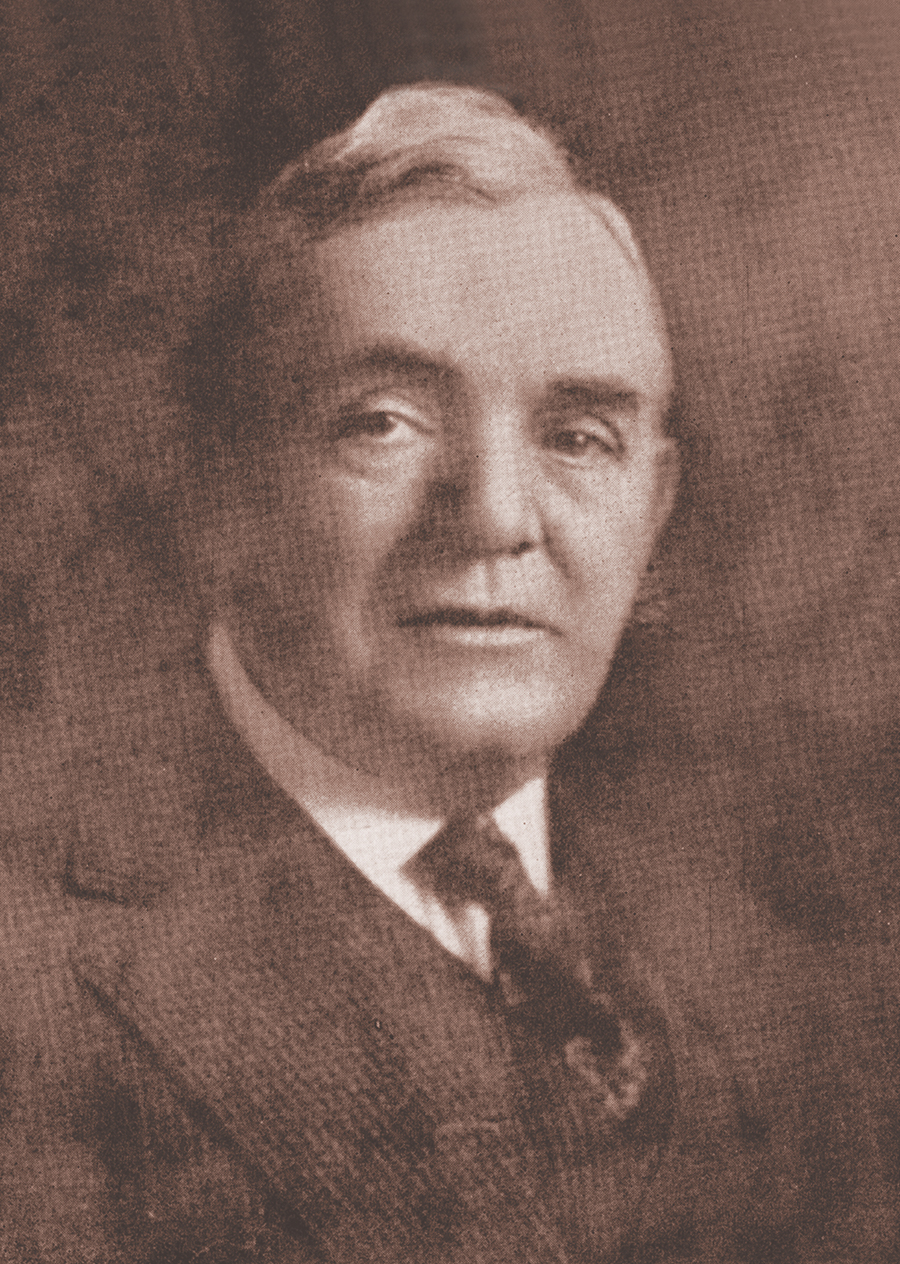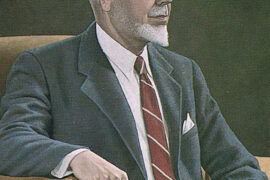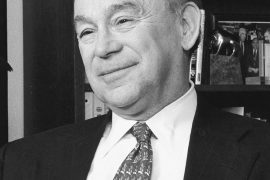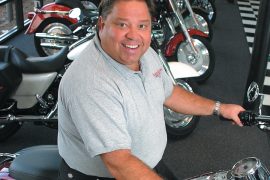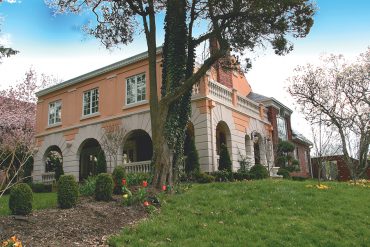A prominent civic leader and the region’s other railroad tycoon
By Joseph Platania
HQ 51 | SPRING 2004
Huntington attorney Z.T. Vinson could be considered the father of public mass transit in the Tri-State. And as if that were not enough, he also was the founder of Camden Park.
The Vinson family was long identified with the history and development of Huntington and Cabell County. The family home, located near Kellogg in West Huntington, was a showplace of the Ohio Valley.
Nearby, Camden Park is on property originally owned by Samuel Sperry Vinson. At one time, Sam Vinson owned 10,000 acres on or near the Ohio and Big Sandy rivers, and had several homes in what now is the Westmoreland part of Huntington. His oldest son was Zachary Taylor Vinson, who was a prominent Huntington lawyer for nearly 45 years. He was also a powerful figure in financial, political and civic affairs.
Z.T. Vinson was born on Dec. 22, 1857. He was educated in Wayne County schools and graduated from Bethany College in 1878. He attended law school at the University of Virginia and the Boston University Law School. He was admitted to the Cabell County Bar on July 24, 1883 and a short time later, began work in Huntington where he became a partner with Judge Thomas H. Harvey in the firm of Harvey, Vinson and McDonald.
Z.T. Vinson was a major player in building the Huntington and Big Sandy Railroads and, consequently, made a substantial sum of money, according to George S. Wallace in his 1935 book Cabell County Annals and Families.
Wallace adds that during the late 1890s, Vinson was stricken with an illness and remained in bed for several years. His health returned by the turn of the 20th century and he soon was involved in the sale of coal-rich land in Logan County to the Island Creek Coal Company.
“Vinson conceived the idea of building a railroad down the Guyan River from the Logan coal field to Huntington; crossing the Ohio river at 17th Street, and then to Jackson, Ohio, to connect with the B&O Railroad,” Wallace writes.
Vinson married on Jan. 18, 1901, to Miss Mary Chaffin in Richmond, Virginia.
Vinson took a great interest in local railroading, especially street railways. In 1899, he organized the Ohio Valley Electric Co. that became the forerunner of the Camden Interstate Railway. Camden Park, which was intended as a picnic ground, is intertwined with the history of Huntington’s first streetcar line and the Ohio Valley Electric Co. The original reason for founding the park was to stimulate patronage for the trolley line.
The park was built by the Camden Interstate Railway Co., an electrical street railway that established in 1903 the first interurban streetcar service between Huntington and Ashland, Kentucky. It was originally owned by Sen. Johnson Camden of Parkersburg.
In 1881, Camden, a big league capitalist, began the construction of the Ohio River Railroad from Wheeling to Huntington, heading a syndicate of investors. In 1890, Sen. Camden’s attorney, Z.T. Vinson, obtained from the city of Huntington franchises to continue the line between Guyandotte, just east of Huntington, and Kenova as part of the Ohio River Railroad.
By 1901, Sen. Camden had sold his Ohio River Railroad to the B&O System.
Streetcars were added to the city’s rail transportation when the Huntington Electric Light and Street Railway Co. began service on Dec. 15, 1888. With tracks laid up Third Avenue, cars began making several trips daily. What is said to have been the second electrical street railway in the United States began operating when the line was completed to Guyandotte in 1889.
Electric street railways made little progress or profit during the 1890s until Vinson took options on the lines in Huntington and in Catlettsburg and Ashland, Kentucky. He was able to persuade investors of the need for interurban service between Huntington and Ashland. Vinson envisioned a consolidated Ohio Valley Electric Co. and as an attorney representing Sen. Camden, he sold him on the progressive idea.
On Sen. Camden’s behalf, Vinson acquired in 1899 the streetcar companies and other subsidiary operations serving Catlettsburg and Ashland and Ironton, Ohio. By the end of the year Vinson had incorporated the Ohio Valley Electric Co. and had arranged to buy Huntington’s electric street railway company. A connecting line and bridge were built across the Big Sandy River and service between Huntington and Ashland begun in July 1903.
The new streetcar line began at Guyandotte, two miles east of Huntington, and extended through Huntington along the south shore of the Ohio River to Kenova. Here the road crossed the Big Sandy River entering Kentucky and proceeded through Cattlettsburg and along the Ohio River to Ashland. At Ashland a steam ferry carried passengers to Coal Grove on the Ohio side where they again boarded cars for Ironton. The entire line covered 27 miles and served a growing industrial area.
In 1901 the line was christened the “Camden Interstate Railway.”
The success of the milliondollar-plus venture was soon demonstrated as the railway began to earn income far in excess of operating expenses. After several years, Sen. Camden and his co-investors sold their stock to a Philadelphia company. In 1916, the name of the streetcar company, which later included a line operating in residential Huntington, was changed to The Ohio Valley Electric Railway Company.
The 17-acre tract of level farmland near the mouth of Twelvepole Creek and the Ohio River in northern Wayne County, a part of old Sam Vinson’s holdings, was at the end of the Camden Interstate line coming from Huntington as well as the railway’s exchange point between Huntington and Ashland. It was a natural, tree-shaded site for a picnic area and, after its development, was named Camden Park and opened to the public.
In 1903, a pavilion was built for picnics, square dancing and family reunions. A few rides were installed by 1907, including a merry-go-round.
Z.T. Vinson died on Jan. 31, 1929, at Hot Springs, Arkansas, where he was on vacation. He was 71. He is buried in Spring Hill Cemetery in Huntington.
In his obituary Vinson is described as a “developer of southern West Virginia.” It adds that with the late Gen. James Lewis Caldwell, Vinson established the town of Central City, not part of West Huntington. Vinson also worked with W.J. Williamson in the establishment of the city of Williamson, West Virginia.
The Ohio Valley Electric Railway Co., which Vinson organized and promoted, later became the Ohio Valley Bus Co., which served the entire Tri-State area for many years. It was the forerunner of the present Tri-State Transit Authority.
Camden Park, which Vinson founded in 1903, remains after a century in business, West Virginia’s only amusement park and popular warm weather destination for thousands of people.

